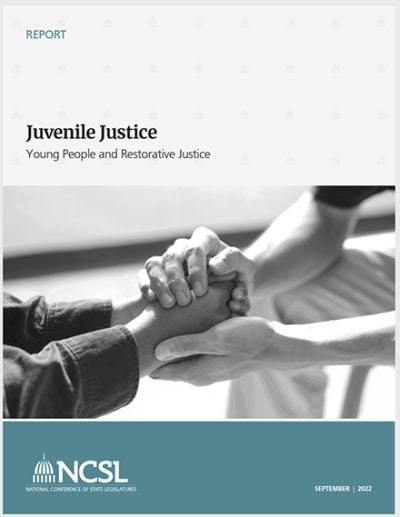Summary
Restorative justice models present an alternative way for communities and lawmakers to understand and respond to crime. These models give people who have been harmed the opportunity to be heard, ask questions, seek restoration and gain closure. At the same time, individuals responsible for the crime gain an opportunity to apologize and make amends.
This report, produced by the National Conference of State Legislatures, examines restorative justice as a promising approach to juvenile justice reform. The document describes various restorative justice models and how they work to repair harm caused by delinquent acts while balancing the needs of the victim, the individual who committed the offense and the community at large.
Restorative Justice Eligibility and Efficacy
Both the young people who have committed harm and the people they’ve harmed can benefit from participating in the restorative justice process, according to research. For example, a 2015 study evaluating the effectiveness of restorative justice programs found that:
- Restorative justice programs moderately reduced future delinquent behavior, increased victim satisfaction and boosted perceptions of fairness in the justice system.
- Only 18.4% of young people who had participated in a restorative community conferencing program had committed another delinquent act one year later. This rate rose to 32% among young people whose cases were processed through the traditional juvenile system.
- Due to the lower rates of re-offending, the program’s average one-time cost of $4,500 is significantly less than the average annual cost of keeping a youth on probation, which tops $23,000.
Prosecutors’ Perspectives
Prosecutors play a pivotal role in restorative justice practices by providing accountability, improving safety and meeting the needs of crime survivors. Accordingly, the report outlines best practices for prosecutors seeking to adopt restorative justice models. These include:
- working with community partners to define an expansive scope of offenses eligible for restorative justice;
- providing restorative justice training to all prosecutors;
- learning about best-practice restorative justice programs; and
- supporting legislation and policy that promote, develop and fund restorative justice programs.
State Legislation
Lawmakers have been enacting restorative justice policy for over 40 years and some state-level efforts are more comprehensive than others. Today, more than 50% of all states have adopted laws supporting restorative justice practices and a number of states are pursuing legislation to fund restorative justice programming.







